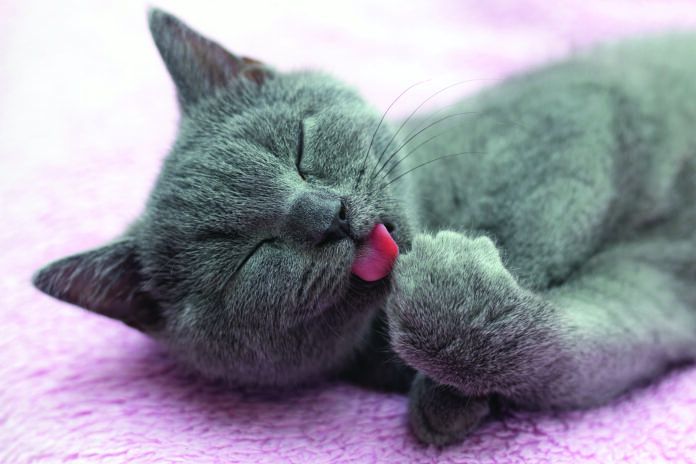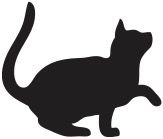The typical cat grooms herself at least 30 percent of the day, and sometimes up to 50 percent. It’s normal. But with so much time spent licking and gently biting at their coats, how can you tell when a cat is over-grooming? It’s an important question because too much grooming can be a sign of a number of conditions that require medical treatment. These include:
Allergies. Allergies appear to be the most common cause of excess grooming, says Tufts veterinary dermatologist, Ramón Almela, DVM. (Instead of watery eyes and sneezing, allergies in cats are generally manifested by excessive licking.)
Pain. Licking can be self-soothing for a cat in pain. Sometimes a cat will lick an area on her body that hurts, but where she licks isn’t always related to her discomfort. Consider that some of the illnesses that cause over-grooming don’t appear on or right under a cat’s coat. These include gastrointestinal diseases and bladder inflammation (cystitis), arthritis, and full anal sacs.
Infections. Fleas and ticks can send a cat into grooming overdrive. So can skin infections caused by bacteria or other pathogens.
Feline hyperaesthesia. This is a condition in which a cat experiences hypersensitivity to being touched, either by petting or, say, being groomed with a brush. A rare neurological condition, it results in high-gear self-grooming as a way to get a handle on the sensitivity.
Psychogenic alopecia. This is rare, but sometimes a cat will over-groom as a response to anxiety. The anxiety can stem from changes in the household, a dramatic change in schedule, or a severe dearth of environmental enrichment. Physical causes of excess grooming should be ruled out before psychogenic alopecia is considered.
How do you know if your cat is excessively self-grooming?
Because cats groom themselves so much of the day, you might wonder how you can tell if your pet is overdoing it. Here’s how to tell.
- Frequently biting a certain area or pulling out hairs there, often to the point of creating bald spots.
- Change in fur color, often to a brownish tint.
- Licking frantically — often. Cats tend to go at it with a bit of a vengeance here and there, but if you’re familiar with your cat’s grooming habits in general, you’ll sense when they’ve crossed the line, so to speak. In some cases, the grooming is so insistent that when people try to stop it, their cat will growl at them.
If you see or even sense that your cat is over-grooming, a veterinary visit is in order.




